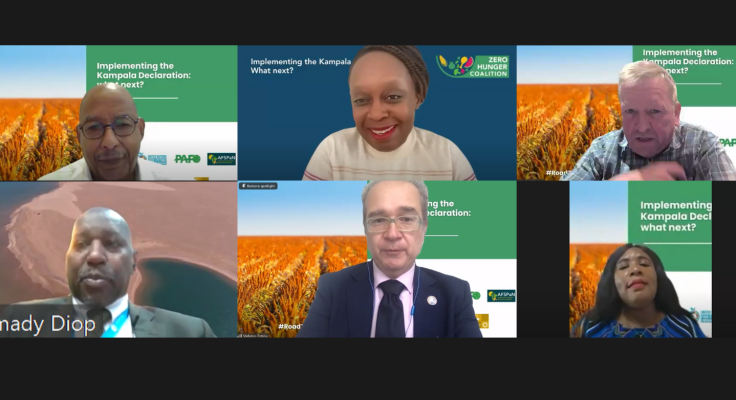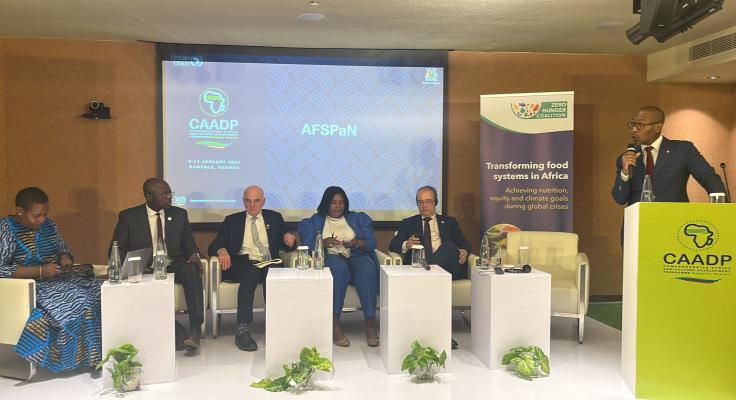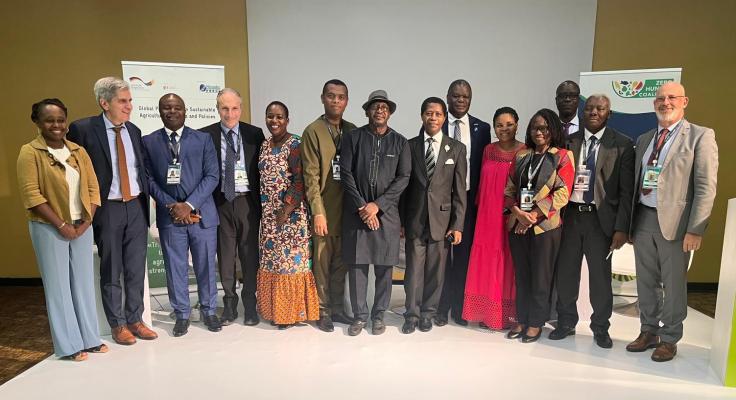Zero Hunger must remain a global priority
In the final months of 2024, the international community is gearing up for a series of pivotal global gatherings. In addition to the annual UN General Assembly, Climate Week in New York City and the G20 Leaders’ Summit, world leaders will also participate in three COPs addressing climate, desertification and biodiversity.
While these summits may not be focused on addressing zero hunger, their outcomes will have profound implications on global food security. While recognising that achieving Sustainable Development Goal 2 (Zero Hunger) by 2030 may no longer be attainable, a holistic approach that integrates food systems with climate, biodiversity, and economic policies remains critical. This approach can help mitigate hunger, build resilience in vulnerable communities, and drive significant progress toward reducing food insecurity, even if the ultimate goal now remains beyond reach.
Food systems remain at the heart of many of today’s global crises - from climate change and biodiversity loss to economic inequality and political instability. Hunger is deeply rooted in these challenges and affects over 730 million people around the world. Yet, without urgent intervention, the number of people suffering from hunger will rise dramatically by 2050 as climate change wreaks havoc on agriculture.
Last year, the global community took important steps in recognising the link between agriculture and climate with the COP28 UAE Declaration on Sustainable Agriculture, Resilient Food Systems and Climate Action, which called for food and agriculture to be built into nationally determined contributions and adaptation plans, and the launch of the FAO global roadmap, Achieving SDG 2 without breaching the 1.5 °C threshold. Despite these important breakthroughs, progress remains slow.
Ensuring continued progress towards zero hunger will require that global leaders address the following questions:
1. Can we build food systems resilient to climate change?
COP29 must take bold action to prioritise agricultural resilience as a central pillar in the fight against both hunger and climate change. To adapt food systems to a rapidly warming world, we need to unlock billions of dollars and also ensure that these resources are mobilized swiftly, efficiently and equitably.
For example, we must promote farming designs that mimic nature and promote nature-based solutions such as those that integrate livestock and aquaculture. This is especially crucial for smallholder farmers, who, despite their essential role in global food production, often lack the financial and technical support to withstand climate shocks.
2. How can we protect biodiversity to safeguard food security?
Biodiversity underpins healthy, productive agriculture by maintaining ecosystems that support pollination, pest control and soil health. The rapid loss of biodiversity poses a direct threat to global food security. To counter this, policies that incentivize biodiversity-friendly practices and engage relevant stakeholders such as farmers and conservation organisations are crucial.
Furthermore, enhancing awareness on the significance of biodiversity for food security will facilitate community engagement in conservation initiatives. The next COP16 on biodiversity offers an important moment to safeguard ecosystems while ensuring that agriculture remains sustainable. Examples can be taken from practices in agroecology, agroforestry, crop diversity and regenerative agriculture. Leaders will need to strike a balance between conserving nature and feeding a growing global population—without compromising on either goal.
3. Are we investing enough in the right solutions?
We are not investing sufficiently in the right solutions to build sustainable and resilient food systems. While significant contributions have been made towards climate finance, the estimated US$ 2.4 trillion needed annually for developing countries to meet their climate and nature goals by 2030 points to a significant funding gap.
At COP29, global finance will face scrutiny, particularly in how much is allocated to agricultural resilience and sustainable rural development. And, it is likely to be insufficient. For this reason, domestic resource mobilisation is key. Developing countries must therefore commit to funding their transformation towards climate-resilient agriculture alongside their international partners.
In addition to domestic efforts, innovative financing mechanisms such as blended finance, green bonds and public-private partnerships can help close the gap. However, it is important to ensure transparency and accountability in financial commitments, ensuring investments are channelled toward sustainable and inclusive solutions.
4. How do we ensure that smallholder farmers have a voice?
Smallholder farmers are responsible for a large share of global food production but are often excluded from major policy discussions. Platforms like the Zero Hunger Coalition are intended to bridge this gap, but the question remains: how can these farmers, who are among the most vulnerable to climate change, be empowered to shape policies that directly affect them?
Ensuring their inclusion in decision-making is not just a matter of fairness but a necessity for sustainable solutions. Doing so requires a political will to empower smallholder farmers and address the current imbalances in our power dynamics.
This includes facilitating their representation in national and international forums, ensuring that their unique challenges are integrated into policy frameworks, and providing them with the financial and technical support to participate substantively.
It also means developing inclusive policy platforms that allow smallholder farmers to have a direct voice in shaping strategies related to climate resilience, agricultural financing and sustainable food systems. Only by embedding their perspectives in these discussions can we create solutions that are equitable, scalable and sustainable.
5. Can agreed targets address hunger?
Hunger is a multidimensional issue, linked to climate, health, trade and economic policies. Yet, international efforts are often fragmented. Targets set in international treaties such as the Paris Agreement and the Global Biodiversity Framework must address multiple issues, including hunger. Too often, global commitments are not kept.
The dwindling of Official Development Assistance (ODA) further adds to this challenge and signals the need for countries to seek alternative financing strategies and rely less on traditional international aid. To bridge this gap, domestic resource mobilisation and innovative financing are essential.
Cooperation between countries in the Global South is critical, as they share similar challenges and can lead by example in developing regional solutions. Agreed targets can only address hunger if backed by stronger accountability mechanisms, sustained political will and integrated approaches that bring together stakeholders across sectors and regions, ensuring policies are coherent and inclusive.
6. How do we future-proof our solutions?
When addressing issues such as climate change, biodiversity loss and food security, the global community cannot overlook how societies will transform over the next 30 years. Taking Africa as an example, the continent's population is projected to double between 2020-2050, with cities expected to accommodate an additional 950 million people. Solutions conceived today must address these future challenges and opportunities.
Future-proofing requires long-term planning, flexible policies and innovative technologies that can evolve alongside societal changes. It also requires integrating climate resilience, urbanisation trends and the unique needs of growing populations into strategies that ensure sustainability and inclusivity. Solutions must consider not only immediate concerns but also how to build infrastructure, food systems, and economies capable of supporting this exponential growth.
Ultimately, future-proofing means building in scalability and fostering cross-sectoral collaboration to ensure that today’s solutions are robust enough to meet tomorrow’s challenges.



